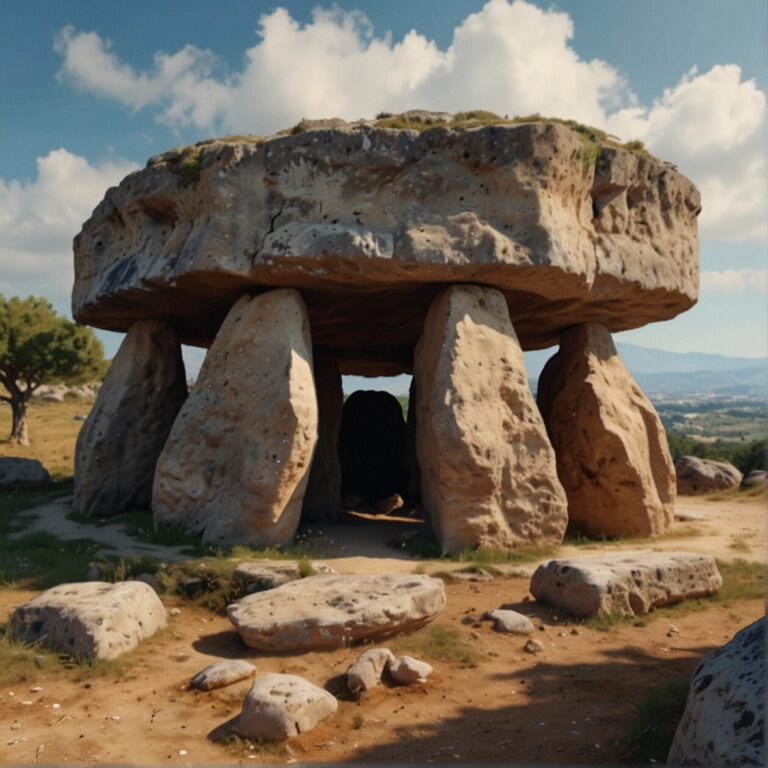Threading Ethics into Adventure: How Ethical Sourcing is Changing the Game for Adventure Brands
As an avid adventure seeker or industry insider, you’ve surely heard about the growing movement of ethical sourcing that’s shaping the future of the outdoor sporting goods sector. Yet, you might not fully understand its underpinnings or how you, as a consumer, play a part in this grand design. The symphony of ethical sourcing is fine-tuned. It grapples with environmental stewardship, meticulous supply chain scrutiny, and keen consumer decision-making to hit that perfect harmony. The results are groundbreaking, both in terms of social responsibility and brand image.
“Ethical sourcing is more than a buzzword; it is a commitment to doing good, while doing well.”
Before we journey into exploring this profound movement in the adventure industry, let’s get on the same page. In a nutshell, ethical sourcing is the process of ensuring the products being sourced are obtained responsibly, respecting both the environment and the human rights of those involved. From that point of view, something as simple as picking up a sustainably produced mountain bike, or going for a climb in ethically manufactured gear, matters a lot. This is more than just a choice; it’s a vote with your dollar for a more equitable and sustainable world.
- Environmental Stewardship: Ethical sourcing considers the entire lifecycle of a product, from raw materials, manufacturing, transportation, and eventually, disposal. The goal is to minimize environmental impacts at each stage.
- Supply Chain Responsibility: Ethical sourcing also looks at how workers along the supply chain are treated, ensuring they are paid fair wages, work in safe conditions, and are not subject to any form of exploitation.
- Consumer Decision-Making: Every purchase tells a story. When you choose an ethically sourced product, you contribute to a safer, healthier, and fairer society. Your consumer choice thus ignites a ripple effect that pushes adventure brands to uphold ethical sourcing standards.
Now, shall we dive in and uncover how ethical sourcing is revolutionizing the adventure industry and why it should matter to you?
Ethical Sourcing: A New Era for Adventure Brands
Ethical sourcing is no longer an optional choice for adventure brands; it’s a necessity pursuing a new age of transparency, sustainability, and consumer consciousness. The industry is rapidly changing, propelled by the realization that our planet’s natural bounty isn’t limitless, and the need to balance profit and protection has never been more important.
At the core of ethics in sourcing is an effort to minimize negative effects on the environment, uphold human rights in labor practices, and exert respect towards animal welfare. Reputable brands such as Cotopaxi, Save the Duck, Vaude, La Sportiva, Alpkit, and Picture Organic shine as examples in the arena of ethical adventure gear, utilizing ethically sourced materials and emphasizing a staunch commitment to fairness and integrity throughout their supply chain.
For example, adventure brands are increasingly exploring vegan-friendly products, which contain no animal-derived elements and are free from animal cruelty. These products illustrate a potentially strong choice for ethically conscious outdoor gear, further highlighting the shift in industry norms.
Other approaches also include the increased production of Fairtrade outdoor clothing, particularly by North American apparel brands. Fairtrade ensures fair pricing and ethical conditions for farmers and workers in developing countries, demonstrating a robust global commitment to ethical sourcing.
This new-era also sees organizations creating unique ways to build their own ethical sourcing programs. Innovative ideas include emphasizing human-powered activities, advocating for sustainable travel, promoting ethical gear, sourcing local foods, and encouraging adherence to the “Leave No Trace” principles in order to help preserve the natural landscapes we so love to explore.
It’s clear that ethical sourcing in the adventure industry is about far more than just outdoor clothing and gear. It’s an overarching commitment to sustainable, responsible practices that conserve our planet, support global economies, and influence consumer choice for the better—all without sacrificing the thrill of adventure.

Consumer Choices: The Ripple Effects of Ethical Sourcing
As consumers, you wield incredible power simply through your purchasing decisions. What you choose to buy, and just as importantly, what not to buy, can nudge businesses towards more ethical practices. It might seem like a small thing, but these decisions can have a seismic impact – hence the term ‘ripple effect’.
The rise in demand for ethically sourced materials is increasingly a key focus in the adventure industry. Conscious customers are showing their willingness to buy from responsible brands, even if it means shelling out a few extra dollars. Importantly, they’re also holding brands accountable, and this elevates brands’ dedication to ethical practices, sustainability, and overall transparency. From supplier contracts with embedded standards for ethical practices to in-house ethical sourcing programs, the adventure industry is continuously evolving, guided by consumer choices.
But how can you, as a consumer, be confident that your choices are making a difference? First and foremost, do your homework. Look up a brand’s track record and past performance around ethical practices. Check if they are certified by recognized organizations such as Bluesign or B Corp, both of which compile lists of brands committed to sustainability and doing right by the planet.
Another option to increase your positive impact is by buying second-hand outdoor gear. The environmental impact of manufacturing new products is vast, and opting for second-hand items is a tangible way to lower that. Of course, this option isn’t viable for all products, but where possible, it can significantly contribute to a reduction in environmental harm.
Our collective drive for ethical sourcing in the adventure industry empowers us to ripple out change, fostering environmental efficiency and sustainable shopping practices. So, the next time you’re making a purchase, remember the power you hold. The choices you make today will shape the industry’s future.
The Role of Transparency in Ethical Sourcing
Just like the clear waters of a mountain stream, transparency in ethical sourcing is paramount. It isn’t enough to simply claim ethical sourcing practices; adventure brands need to provide evidence of their responsibility.
Consider this – there are no official standards or codes that guide ethical sourcing practices. In this gray area, organizations are left to create their own path. This is where transparency stands as an invaluable tool. By being open about their ethical sourcing process, adventure brands not only showcase their commitment to ethical principles but also help to set standards in an industry that lacks formal guidelines.
So, how does one do this? Ensuring transparency begins with incorporating clear ethical practices into supplier contracts. Sharing these practices with the public and auditing them consistently goes a long way in nurturing transparency. This often involves continual audits to verify compliance with ethics-related contractual agreements. After all, saying you are rowing your boat gently down the stream isn’t enough – you need to show it.
That said, it isn’t just about setting the criteria and monitoring the practices of existing suppliers. When considering potential suppliers, companies need to evaluate them based on existing ethical policies like sustainability. This evaluation should consider the supplier’s environmental credentials and historical performance regarding ethical practices.
Transparency also comes from being aware of industry peers’ ethical sourcing practices. Identifying, emulating and exceeding best practices of ethical conduct from successful competitors offers an additional approach to enhance the adventure brand’s integrity.
With all of these transparency efforts, it’s easier for you, the consumer, to make informed choices. You can not only enjoy your adventure activities knowing that they were sourced ethically, but also contribute towards fostering an environment of ethical sourcing. So next time you gear up, make sure you’re strapping into ethical practices too.

Diving Deeper into the Supply Chain: Adventure Brands and Ethical Sourcing
Ethical sourcing involves paying a fair wage and ensuring safe working conditions for those who produce and distribute a brand’s products. It’s a detailed process that demands transparency at every step. But the story doesn’t just end at procuring ethically sourced materials; it goes deeper into the manufacturing and distribution process, and even the afterlife of products.
Let’s take a minute to look at some brands setting an excellent example in this space. North American apparel brand, for instance, has been commended for producing Fairtrade outdoor clothing. Brands like Cotopaxi, Save the Duck, Vaude, La Sportiva, Alpkit, and Picture Organic follow suit, championing the cause of ethical sourcing in the adventure industry.
Each of these organizations build their own ethical sourcing program uniquely. Unfortunately, there are no official standards or codes that guide ethical sourcing practices comprehensively. However, certain organizations like Bluesign and B Corp provide lists of brands committed to sustainability. This reflects their stringent criteria for maintaining environmental balance, ensuring animal welfare, and realizing human rights, thus aligning nicely with the concept of ethical sourcing.
As we dive deeper into the supply chain, it becomes increasingly important for us as consumers to verify the track record and past performance of adventure brands. Ethical sourcing doesn’t just reflect a brand’s commitment to the environment and people, but also their integrity and business ethics. We each have an active role to play in driving conscious consumerism, empowering ethical sourcing, and promoting sustainability in the adventure industry.
A Sustainable Path: How Ethical Sourcing is Shaping the Future of Adventure
Creating a Sustainable Path— can you imagine an interesting and more worthwhile endeavor? Ethical sourcing in the adventure industry is doing just that, shaping the future by turning to practices that respect the environment, maintain the welfare of animals, and ensuring human fairness. By choosing ethically sourced materials, adventure brands put on the hero’s cape, contributing significantly to a sustainable future for all.
Take for example, the case of companies like Cotopaxi, Save the Duck, Vaude, La Sportiva, Alpkit, and Picture Organic. These sustainable outdoor brands wield a powerful influence in the industry, championing the cause of ethical sourcing and ensuring their models are followed. An impressive line-up, don’t you agree?
Focusing on vegan-friendly products, renowned brands are now also proving that outdoor gear can be free from animal cruelty. By consciously avoiding harmful materials, they are setting benchmarks and challenging the stereotype of what we deem as ‘high-performance’ gear.
Here won’t you agree, seeking out responsibly produced hiking shoes or outdoor clothing isn’t too much of a stretch? Time spent scouring for those cruelty-free, eco-friendly adventure gears isn’t in vain but indeed, an investment in our planet’s future.
Notably, the green revolution is not limited to tangible products alone. An ethos that prizes “human-powered activities,” ethical adventure tours are promoting sustainable travel methods, promoting local cuisines, adhering to “Leave no Trace” principles and using ethical gear. The adventure industry is effectively transforming itself from within, emphasizing sustainable outdoor pursuits. A revolution indeed!
With ethical sourcing, the adventure industry is proving that the undertaking of crafting a sustainable path can be both a rewarding challenge and an attainable goal. There is still work to be done, certainly, but with every responsibly sourced hiking boot, and every eco-friendly adventure tour, we are one step closer to a future of sustainable adventure.
So, next time you take that leap for an adrenaline rush, remember, your choices exhibit much more than just your thirst for adventure—it shows your commitment to a sustainable and ethical world. Time then, wouldn’t you say, to dive deeper into understanding, embracing, and championing ethical sourcing.
FAQ’S
Now that we’ve explored the ins and outs of ethical sourcing in the adventure industry, we’re sure you have a few questions brewing. From the importance of ethical sourcing to the significant role consumers can play, we’ll address those big questions here. Under this section, we’ve gathered the most common queries that crop up in discussions about ethical sourcing and the adventure industry. Let’s dive in and unravel these significant points together.
Why is ethical sourcing important for adventure brands?
Pivotal to the success and integrity of adventure brands, ethical sourcing offers substantial benefits. At its core, it’s about ensuring that the products they offer are created in a manner that values environmental conservation, animal welfare, and human rights. This directly ties in with the core values of many adventurers – respect for nature and fairness.
Adventure gear made from ethically sourced materials can make the thrilling escapades of adventure seekers more eco-friendly. When you’re climbing a majestic mountain or kayaking through a gently flowing river, it brings peace of mind knowing that your gear didn’t harm the environment or exploit workers. This satisfaction isn’t just a priceless addition to the adventure experience—it amplifies it.
Additionally, ethical sourcing can be a significant differentiator for adventure brands. Nowadays, consumers are more conscious and choose to support businesses that align with their personal values. By committing to ethical sourcing, adventure brands are not only preserving natural resources and promoting fair trade but also creating a positive brand identity that can attract a loyal customer base.
Adventure brands like Cotopaxi, Save the Duck, Vaude, La Sportiva, Alpkit, and Picture Organic, to name a few, have embraced ethical sourcing to create sustainable outdoor clothing and gear. Their success stories showcase the crucial importance of ethical sourcing in maintaining the delicate balance between satisfying consumer demand and caring for our planet.
In conclusion, from enhancing the overall adventure experience to safeguarding the environment and contributing to fair trade, the significance of ethical sourcing for adventure brands is truly far-reaching.
What are the challenges of ethical sourcing in the adventure industry?
Just like any other business practice, ethical sourcing isn’t without its share of hurdles. Firstly, building an effective ethical sourcing strategy is far from a one-size-fits-all scenario. Each organization in the adventure industry must structure its own program uniquely, and there are no official standards or codes of conduct that guide these practices universally. This absence of uniform regulation can make the process daunting and complex.
There’s also the challenge of evaluating a brand’s past performance and current practices regarding ethics. Digging into a company’s history and investigating their transparency in sourcing isn’t always straightforward or easily accessible. Strong commitment and diligence are needed to thoroughly study and assess a brand’s track record. Furthermore, companies themselves may struggle to maintain total visibility over their entire supply chain, making it difficult to ensure each stage of the process adheres to ethical principles.
Economic challenges can follow, too. Ethically produced goods often come with higher production costs. These may be reflected in higher prices for consumers, which can discourage purchases if customers aren’t fully invested in the importance and value of ethical sourcing.
Finally, creating vegan-friendly adventure gear, free from animal cruelty, brings its own challenges. The development and usage of high-performance, durable, and eco-friendly synthetic materials that can replace traditional animal-based materials is not an easy task, and is still being perfected by industry leaders.
Overcoming these challenges is no small feat, but the rewards – for our planet, for workers and for consumers – are well worth it.
What are the benefits for adventure brands that practice ethical sourcing?
Let’s dive right in. There’s a plethora of advantages for adventure brands that stand firm in their commitment to ethical sourcing. To start, they’re helping to make a palpable difference in the global industry landscape – driving positive change and setting the bar high for others to follow. So, let’s break it down.
Positive Brand Perception: Ethical sourcing enhances a brand’s public image and reputation. As more and more consumers prioritize responsible sourcing practices, brands making this move are viewed as compassionate and forward-thinking. They’re showing they care about more than just profit margins – and that earns them credibility, respect, and customer loyalty.
Market Differentiation: With ethical sourcing, brands can distinguish themselves from competitors. Ethical practices become a unique selling proposition, attracting consumers who align with those values. These could be anything from choosing Bluesign certified products to taking pride in being a B Corp. Such differentiation can drive brand preference, loyalty, and ultimately, growth.
Improved Supply Chain Management: Ethical sourcing often translates into robust supply chain management. Brands are encouraged to develop more transparent and responsible sourcing practices, which can result in fewer disruptions, increased risk management, and long-term, mutually beneficial relationships with supplies.
A More Sustainable Future: Brands practicing ethical sourcing, for instance, committing to Fair Trade Certified products, are playing a crucial role in promoting a more sustainable world. They’re actively involved in reducing environmental footprint, supporting animal welfare, and ensuring human rights and fair wages. Every step they take, no matter how small, is a stride towards a greener planet.
And finally, ethical sourcing can fuel innovation within organizations, as they regularly seek smarter, more sustainable methods and technologies to drive their practices. Plus, the fact that it aligns with an increasing number of consumers’ values and purchasing preferences – well, that’s just a cherry on top of the cake.
How can consumers ensure they’re supporting adventure brands with ethical sourcing practices?
Supporting adventure brands practicing ethical sourcing isn’t as daunting as you might think. It starts with informed consumerism. Purchasing from responsible brands is like casting a vote for the type of world you want to live in. Here are a few steps to ensure that you are backing the right ethical vocalists.
Research the brand: This involves checking the brand’s track record and past performance regarding ethical practices. Many organizations build their own ethical sourcing programs uniquely. Companies like Bluesign and B Corp provide lists of brands engaging in sustainable practices. A brand’s commitment to sustainability and fair trade practices can often be found on their website or through their public communication channels.
Eco-friendly clothes: Clothes made from recycled materials stand out in the crowd. Look for sustainable certifications on the products. The production location can also hint towards the brand’s commitment to environmental responsibility. For example, producing items locally significantly reduces the global transportation footprint.
Supporting ethical products: Ethical outdoor clothing emphasizes environmental, animal, and human welfare. Choosing such products directly support the cause. Key industry players leading the way in ethical sourcing include Cotopaxi, Save the Duck, Vaude, La Sportiva, Alpkit, and Picture Organic.
In summary, endorsing ethical sourcing practices comes down to educating oneself and making conscious decisions. Let’s remember, every purchase is a signal to the market. With time and collective effort, we can influence the direction of the adventure industry towards a more sustainable future.
What are the consequences of not following ethical sourcing in the adventure industry?
Imagine, if you will, a world where adventure brands shrug off the importance of ethical sourcing. It’s a grim picture, fraught with negative impacts both for the environment and for the very human communities these brands serve.
The fallout from ignoring ethical sourcing can be severe. For starters, sourcing practices that disregard ethical standards often lead to the exploitation of workers in various parts of the world. This can result in a host of human rights abuses, such as underpayment, unsafe working conditions, and sometimes, even child labour.
Beyond the social implications, your adventure expedition might unwittingly contribute to environmental degradation. Bear in mind, brands that don’t prioritize ethical sourcing could use synthetic materials in their outdoor clothing, which have proven to be harmful to the environment. For instance, petroleum-based products like polyester can take several hundred years to decompose naturally. This tireless consumption of non-biodegradable materials not only contributes to landfill mass but also leads to significant carbon emissions.
Moreover, turning a blind eye to ethical sourcing could also disrupt wildlife. Certain materials and manufacturing processes can endanger animals, either through habitat destruction or the introduction of hazardous chemicals into ecosystems. Cruelty-free, or vegan-friendly products aren’t just a trend; they’re vital for minimizing our impact on wildlife.
For adventure brands, it’s not just about the tangible damage. The damage to a brand’s reputation can be immense if unethical sourcing practices are exposed. It’s a competitive industry and consumers today are well informed and value-driven. They’re more inclined than ever to scrutinize a brand’s supply chain and ethos, making an ethical misstep a public relations nightmare.
So, the consequences of turning a blind eye to ethical sourcing aren’t just dire, they’re multifaceted; human, environmental, and reputational impacts. It underscores the imperativeness for adventure brands to integrate ethical sourcing practices across their supply chains. The industry we love thrives on preserving, not depleting, the world’s natural beauty and its diverse communities. Let’s strive to keep it that way.







